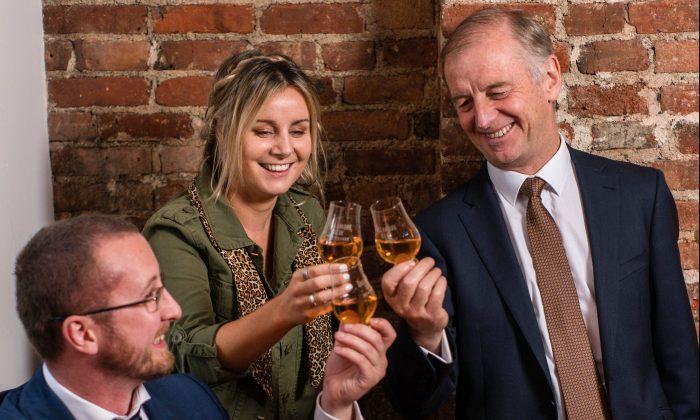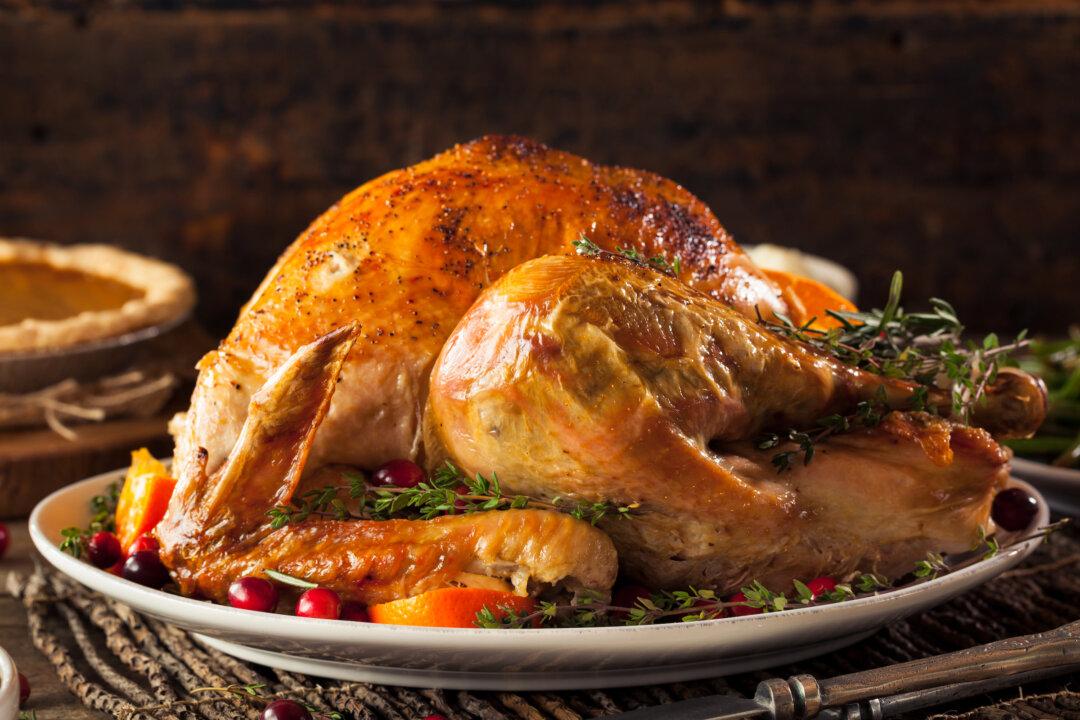A raised glass. A slur of warm words. The clinking of cups punctuating echoes of exclamations from around the room. So goes the toast, a universal custom of tribute and well-wishing that spans countries and cultures.
“No matter where you go, there is this idea of toasting, there is this idea of cheersing,” says Tim Herlihy, U.S. ambassador for Tullamore D.E.W. Irish whiskey. “It’s all kind of simultaneously happened in isolation—I’m fascinated by the similarities.”
English-speakers “cheers,” the Chinese “gan bei,” Italians “salute,” and Germans “prost.”
But at the core of nearly every toast—regardless of the language, exact wording, fancy flourishes or lack thereof—is the sentiment “to good health.” People around the world have been toasting to health and prosperity for centuries.
In medieval times, the sound of clinking glasses was believed to scare away evil spirits or demons. And in those times of constant feuds over land and power, some claimed that clinking glasses was also a security against attempted poisoning. With a hearty clink, liquid from one cup would slosh over into the other, ensuring that “if this is poisoned, you’re going down with me,” Herlihy explains, making toasting also a sign of trust and respect.
As for the term “toasting” itself, that originated from Elizabethan England, according to food historian Francine Segan. Wine drinkers in England—and elsewhere in Europe, too—would add a piece of toast to their glass to filter out impurities. The term was eventually adapted to refer to the person being toasted, and the act of toasting as we know it.
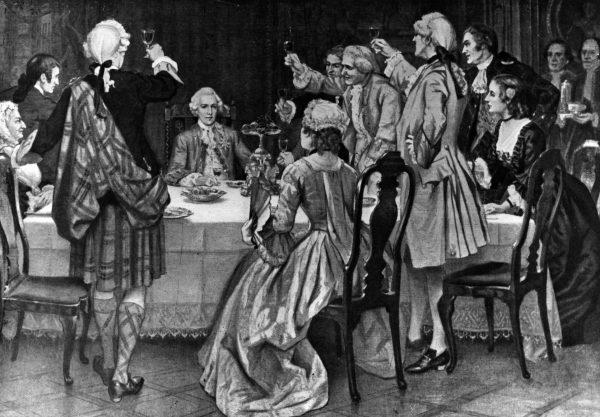
People have been toasting to health and prosperity for centuries. Hulton Archive/Getty Images
How To Give A Toast
Though concerns of poisoned wine from feuding lords are less relevant today, toasting remains a cherished custom—and giving a toast a valuable social skill.Whether a few brief words or a long-winded speech, a toast can enliven an occasion (and turn the giver into a temporary celebrity), or cause the mood to fall flat (and be memorialized as an embarrassing story for years to come).
So what to do if you’re suddenly called to the stage?
In any case, toasts are best kept short and sweet, Herlihy advises, relative to what the occasion calls for.
For an everyday toast, during a night on the town or at a casual dinner party with friends, Herlihy cuts it off at around four lines. Simply start off with a lighthearted introduction, offer a few words of tribute to the person or occasion you’re toasting, and end by calling upon the crowd to join in.
The best toasts are personal, but it doesn’t hurt to have a go-to in your arsenal to whip out at any event. Herlihy suggests having at least one.
He offers his favorite:
“Here’s to cheating, stealing, fighting, and drinking.
If you cheat, may you cheat death.
If you steal, may you steal a woman’s heart.
If you fight, may you fight for a brother.
And if you drink, may you drink with me.”
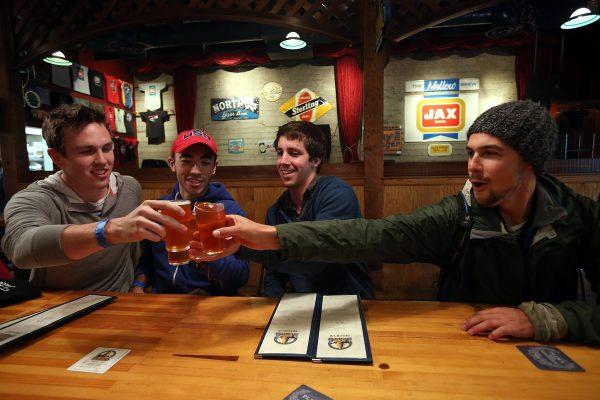
For casual toasts at the bar, Herlihy recommends keeping it to around four lines. Justin Sullivan/Getty Images
Special occasions, however, call for longer speeches. For instance, the wedding toast—a revered but often anxiety-wracking affair—can be a bit of an art. Here’s how to tackle it.
Start Strong
“[Toasts] have a beginning, middle, and end, like any good novel—just condensed,” says Brian Worley of Atlanta, Georgia. As a wedding and party planner and event designer, he has heard—and coached—many a toast.And like any good novel, the beginning should hook your audience from the start.
“People decide if they like your toast within the first seven seconds,” says Vanessa Van Edwards, founder of human behavior research lab Science of People. “If you don’t hook your audience immediately, you will lose them.”
According to Pamela Olsen, former president of New York Toastmasters, it’s all about engagement. “Do something personable” to catch people’s attention, she says. Secure that good first impression, and warm the audience up to you.
Olsen suggests finding something shareable and relatable. Given that your listeners have likely gathered explicitly to celebrate someone or something, that shouldn’t be too difficult to do.
It can be as simple as telling a tasteful joke related to the occasion—with an emphasis on tasteful—to lighten the mood, coax a few first laughs, and set the stage for more. Stay clear of dark or risque humor, unless you’re absolutely certain your crowd will welcome it. Family-friendly is your safest bet.
“Ultimately, you’re the person that has to say these things,” Herlihy points out. “So if you’re going to squirm or be worried about saying anything… probably don’t say it.” As an unintended result, “the precious spotlight can shift from your intended target [of the toast] to yourself.”
On that note, keep in mind that it’s not about you; the toast is meant to honor the receiver, not the giver. Be sure to introduce yourself and provide enough context to answer any questions about why you’re giving a toast in the first place, but keep the spotlight on the person, people, or occasion you’re honoring.
Story Time
Once you’ve made your entrance and set the scene, it’s story time.Pick one main idea you want to convey, Olsen suggests—a character trait to exalt, an accomplishment to celebrate—and relate a telling story or two that express it interestingly but succinctly.
“Speeches are similar to looking at someone’s vacation photos,” Worley says. “You want to see a few highlights, you don’t want to have to relive the entire week’s vacation.” He recalls a groomsman who, in his speech, treated wedding guests to a play-by-play of every year of his friendship with the groom, starting from early childhood. By the end, the guests had lost interest, and the speaker had spiraled into a rambling, drunken mess. In short: keep it short. (And go easy on the alcohol.)
At the same time, though, concise shouldn’t translate to boring. “Make each sentence the most powerful sentence you have ever spoken, so that you are providing a lot of content in as little time as possible,” Worley adds.
Brush up on your creativity, too. Vivid sensory details will further engage your audience, drawing them into your story. “The more [they] can picture (and smell and taste) your story, the more they will be captivated,” Van Edwards writes.
But a note of caution: some stories are best kept to yourself.
Avoid inappropriate, overly personal anecdotes that might embarrass your subject, alienate guests, or cause some to cringe.
“Ex-girlfriends, ex-boyfriends, excursions in the club, the elephants in the room,” Herlihy ticks off the taboo. “It’s a long list.”
While light ribbing contributes color and entertainment if well-executed, remember that your toast should be more a tribute than a roast.
The best stories bring people together. Bill Fish of Cincinnati, Ohio, does a lot of entertaining with his wife, and often gives a toast before dinner. He remembers a toast he delivered at his uncle’s funeral lunch, in which he mused upon his uncle’s tendency to shamelessly invite himself over on short notice.
“I finished up the toast and there must have been 30 people who came up to me with similar stories,” Fish recalls. “I didn’t quite grasp how a silly story would relate to so many people in attendance, and something that stuck with me for future toasts was to attempt to find one anecdote to bring everyone together.”
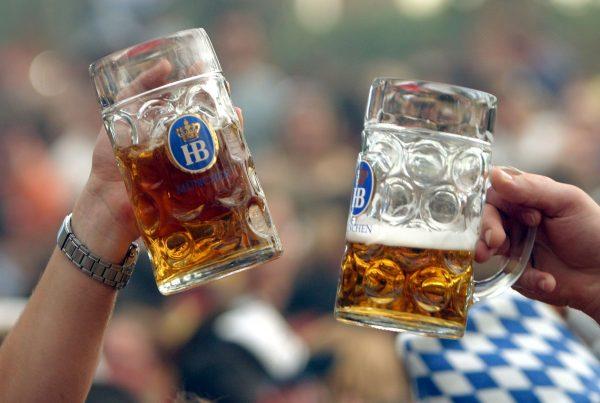
As glasses are brought together, liquid separated from the bottle is reunited, and people are joined in celebration. Sean Gallup/Getty Images
Grand Finale
You should always finish a toast by calling upon the audience, asking them to join in on your well-wishing, Herlihy says.In general, a toast “really should be a bit of a rallying call to all those in the audience, to all those in attendance, to remind the person you’re toasting of just how important we think they are,” he says. At the end, you can make that call explicit.
It’s also a good spot for those ready-made, tried and tested toasts of the “May you…” variety. As always, though, the more personal the better, so speak from the heart.
All rules and formula aside, that’s the key.
“Make sure it’s sincere,” Herlihy says. “Don’t try and do too much with it.”
And don’t dwell too much on pleasing your audience, he adds. After all, “they’re all there to celebrate, and [they’re] pretty keen to raise their glass.”
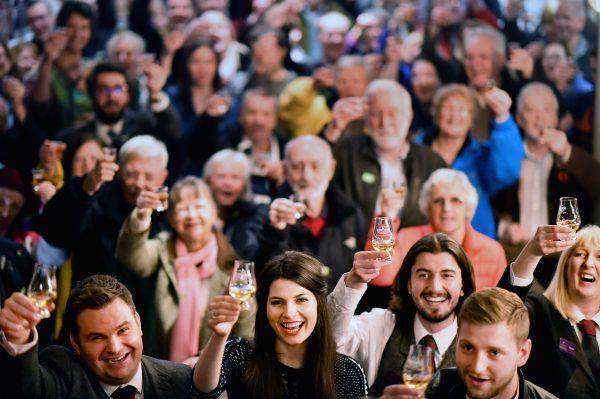
People hold up whiskey glasses at Glenturret Distillery in Crieff, Scotland in an attempt to set a record for the most people to raise a dram toast at the same time. Jeff J Mitchell/Getty Images

